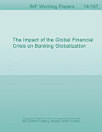An Overview of Macroprudential Policy Tools
ডিচে ২০১৪ · International Monetary Fund
ইবুক
38
পৃষ্ঠা
reportমূল্যাংকন আৰু পৰ্যালোচনা সত্যাপন কৰা হোৱা নাই অধিক জানক
এই ইবুকখনৰ বিষয়ে
Macroprudential policies – caps on loan to value ratios, limits on credit growth and other balance sheets restrictions, (countercyclical) capital and reserve requirements and surcharges, and Pigouvian levies – have become part of the policy paradigm in emerging markets and advanced countries alike. But knowledge is still limited on these tools. Macroprudential policies ought to be motivated by market failures and externalities, but these can be hard to identify. They can also interact with various other policies, such as monetary and microprudential, raising coordination issues. Some countries, especially emerging markets, have used these tools and analyses suggest that some can reduce procyclicality and crisis risks. Yet, much remains to be studied, including tools’ costs ? by adversely affecting resource allocations; how to best adapt tools to country circumstances; and preferred institutional designs, including how to address political economy risks. As such, policy makers should move carefully in adopting tools.
লিখকৰ বিষয়ে
Stijn Claessens is the senior economist in the Debt and International Finance Division of the International Economics Department of the World Bank. Ronald C. Duncan is chief of the International Trade Division of the International Economics Department of the World Bank.
এই ইবুকখনক মূল্যাংকন কৰক
আমাক আপোনাৰ মতামত জনাওক।
পঢ়াৰ নির্দেশাৱলী
স্মাৰ্টফ’ন আৰু টেবলেট
Android আৰু iPad/iPhoneৰ বাবে Google Play Books এপটো ইনষ্টল কৰক। ই স্বয়ংক্রিয়ভাৱে আপোনাৰ একাউণ্টৰ সৈতে ছিংক হয় আৰু আপুনি য'তে নাথাকক ত'তেই কোনো অডিঅ'বুক অনলাইন বা অফলাইনত শুনিবলৈ সুবিধা দিয়ে।
লেপটপ আৰু কম্পিউটাৰ
আপুনি কম্পিউটাৰৰ ৱেব ব্রাউজাৰ ব্যৱহাৰ কৰি Google Playত কিনা অডিঅ'বুকসমূহ শুনিব পাৰে।
ই-ৰীডাৰ আৰু অন্য ডিভাইচ
Kobo eReadersৰ দৰে ই-চিয়াঁহীৰ ডিভাইচসমূহত পঢ়িবলৈ, আপুনি এটা ফাইল ডাউনল’ড কৰি সেইটো আপোনাৰ ডিভাইচলৈ স্থানান্তৰণ কৰিব লাগিব। সমৰ্থিত ই-ৰিডাৰলৈ ফাইলটো কেনেকৈ স্থানান্তৰ কৰিব জানিবলৈ সহায় কেন্দ্ৰত থকা সবিশেষ নিৰ্দেশাৱলী চাওক।






